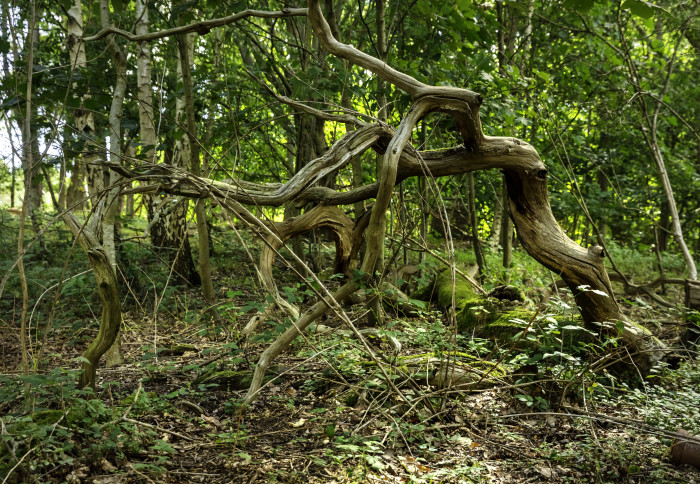Ecologists and mathematicians secure funding to tackle conservation problems
by Jacklin Kwan

The Turner Kirk Trust Challenge Fund brings together mathematicians and conservation scientists to create transformative solutions for conservation.
Researchers from the Centre for Environmental Policy (CEP), the Department of Mathematics and the Department of Life Sciences have secured funding from the Turner Kirk Trust (TKT) to present multidisciplinary solutions to global conservation problems.
The three winning teams of the TKT Sprint Challenge Fund will have the opportunity to apply cutting-edge mathematical frameworks to aid conservation goals.
Modelling climate resilience in future populations

One of the winning teams focuses on using complex systems theory, metabolic theory and real conservation data to understand how different populations of vulnerable species are impacted by climate change.
Professor Henrik Jeldtoft Jensen from the Department of Mathematics, Dr Cristina Banks-Leite and Dr Samraat Pawar from the Department of Life Sciences, and PhD student Ben Howes from the Department of Life Sciences will be investigating how to combine the different biological and mathematical frameworks to create a predictive model for conservationists.
“The missing link [in current complex systems models] is the interactions between species. A monkey amongst many bananas, for instance, has an easier time reproducing and surviving than a monkey amongst many lions,” says Professor Jensen.
“Metabolic theory has the brilliant idea to understand systems as available energy that flows around the system to simplify things tremendously,” he says.
The researchers say that it is now the opportune time to develop the theoretical frameworks for this approach, and validate with existing data.
This model may have the ability to help conservationists predict the vulnerability of different populations to climate change and to aid in promoting biodiversity.
“We realised that we can’t define sensitivity at the species level and we have to define it at the population level because it’s spatial factors that determine which populations are going to fare well or badly in the future,” says Dr Banks-Leite.
Dr Pawar, who specialises in metabolic theory, says: “I’m excited to have this group together. I think it’s rare to have such complementary expertise.”
Understanding the scaling and impacts of environmental interventions
Researchers from the Department of Mathematics and the CEP have proposed to predict the adoption of environmental conservation and restoration initiatives using agent-based modelling.
Dr Morena Mills from the CEP and Dr Vahid Shahrezaei from the Department of Mathematics and their team will model how individual decision-making and collective behaviour within different communities influences the widespread adoption of specific conservation policies.
Dr Shahrezaei says that agent-based models allow the simulation of the interactions between people and resources in space and time. This allows researchers to understand the consequence of individual-level behaviors on the overall outcome of the system.
This is, for example, used by epidemiologists to predict the effect of public health interventions and individual behaviour on the spread of diseases such as COVID-19.
“In conservation policy implementations, one thing we don’t have is a predictive way of modelling current data, and to be able to say what kind of impact a particular intervention will have,” he says, “The work that’s been done so far is mostly explanatory and a lot of it is qualitative.”

Though their research will focus on data regarding farming communities that take up forest restoration activities, Dr Mills says that this approach may have broad and powerful applications
She says: “We believe we can apply it for everything from conservation to restoration within marine and terrestrial systems.”
Dr Mills says that governments around the world have signed up to specific conservation targets – such as protecting 30 per cent of land and sea for nature by 2030 – but “we have no idea of whether these are feasible”.
“This team offers new and exciting approaches for understanding how to scale-up effective conservation measures to meet these global targets,” says Dr Thomas Pienkowski, a Postdoctoral Research Associate involved in the project.
Avoiding the tragedy of the commons
Dr Domènec Ruiz-Balet, Research Associate at the Department of Mathematics, has teamed up with anthropologists Dr Rafael Chiaravalloti and Dr Mark Dyble from University College London to understand how different communities conserve natural resources using game theory.
The tragedy of commons refers to an environmental problem where many selfish individuals exploiting an unregulated resource will eventually deplete that resource. Several theoretical solutions to this problem have been presented.
“We already see small communities in the world that are managing their resources well, even if they possess the ability to destroy their reserves,” Dr Ruiz-Balet says, “We want to understand what the keys are to their success and how scalable they are.”
The research will focus on the interplay between game theory and spatial effects when considering the spatial distribution of resources. The research will take inspiration from small communities, which are often influenced by the selective information sharing inside and between communities.
Collaborating can bring you outside the box of your previous biases. Dr Domènec Ruiz-Balet Department of Mathematics
Dr Ruiz-Balet says that understanding the mechanisms behind how successful societies regulate themselves can help policymakers create tailored policies for different communities around the world.
Collaborating with anthropologists can help narrow research questions and develop new mathematical theories.
“As a mathematician, you sometimes cannot see beyond your desk. Collaborating can bring you outside the box of your previous biases,” he says.
Article supporters
Article text (excluding photos or graphics) © Imperial College London.
Photos and graphics subject to third party copyright used with permission or © Imperial College London.
Reporter
Jacklin Kwan
Faculty of Natural Sciences